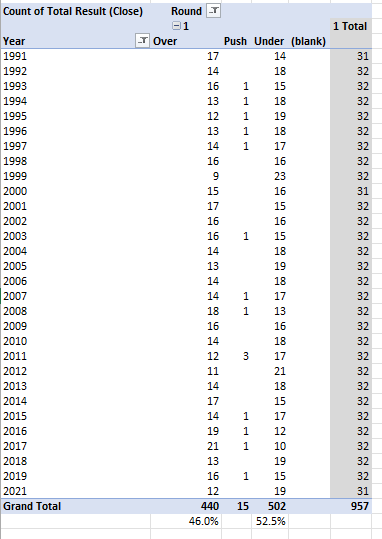The Seeds
The Seeds
There is nothing more exciting than Selection Sunday. For me that starts the best week of the year. (And an aside, my second favorite week of the year is the week before when I'm watching the conference tournaments).
Selection Sunday is the result of an important process that is debated but in reality is very regimented and for gamblers important to understand. This is the NCAA D1 Men's Basketball Tournament Committee Principles and Procedures. So many times, I hear/read posts from people who don't understand the realities of how it works.
I'm not going to explain it all here; use this reference: Long Form -- NCAA
There are 3 steps, they are unique and although at times overlapping done mutually exclusive to each other.
What I think most people will find interesting is that although there is much discussion, the process of selecting and seeding teams is done through a bunch of voting mechanisms with many controls on bias (real or perceived).
The hardest part is Step 3, which is why we learn the most important thing we need to understand about how to assess "seeds" when we are punting;
"A team may be moved up or down one (or in extraordinary circumstances) two lines from its true seed line (e.g., from the 13 seed line to the 12 seed line; or from a 12 seed line to a 13 seed line) when it is placed in the bracket if necessary to meet the principles."
And based on the other rules, "if necessary" is often necessary.
The S Curve Ranking maybe* a valid assessment of teams we can't really assess seeds as a factual assessment of a team and/or correlate that to anything we bet on (SU, ATS, O/U).
*(still based on opinions of unique groups of people if you look year over year, still doesn't' account for the fact that some years the quality of hoops is better and/or worse, the level of parody can change year to year and the selection mechanism only fills 53% of the tournament so overall quality of field is based on results of 32 other events that are randomly controlled etc)
Even if the bracket was "true seeds" meaning no adjustments for P&P placement;
- An 11 seed in 2017 maybe better or worse than a 11 seed in 2015;
- A 6 seed in 2017 maybe better or worse than a 11 seed in 2015;
- Those prior 2 statements may not be correlated.
If you use seeds as a primary factor in determining your betting strategy, you are using somewhat random variables that are in reality not going to align to any better prediction of the future results of the game (SU, ATS, O/U) than any other random variable like height of the 2nd assistant coach, number of married players on the team or ranking of the schools history program against other tournament schools.
But if you were going to use seeds for Round 1 (Th/Fri games -- Common Application), here is how you'd do it based on 2 years of valid data since the shot clock rule changes which has impacted possession counts which impacts scoring and therefore spreads and results.
To understand my analysis, you have to realize that my model is to always look at Favorites and determine will they cover or not cover... so 8 to Cover and 9 Not to Cover is NOT the same thing...also assume -110 on every game with $110 the base unit paying $210 ($100 of profit).
But based on the results, here is the model using seeds as the only factor:
- Bet All 1, 4, 8, 11, 12's to Cover
- Bet All 5, 6, 9 to Not Cover
- Do Not Play games involving 2, 3, 7, 10 or any team over 12 when favs
If you did this the past 2 years, you'd be up $1,480 betting $4,400 for a very health ROI of 33.6%.
It holds up each year as well (as it would have to with that ROI).
In 2016 you'd have been up $530 (pays for the flight) with a 24.1% ROI. 2017 would have been a huge $950 (pays for flight and hotel) with a 43.2% ROI.
But here is the flaw in my process (I did it on purpose). We would not have known 2016 results to establish the methodology in 2016 nor in 2017 would we have had the 2017 results to offset the 2016 results. So lets look at if we applied this process only using 2016 results creating the rules then applying that to 2017:
We are back to that less than 2% ROI and you are not paying for anything more than a drink with your $30; but you risked $1,650 to get that $30. If your goal is not to lose too much, maybe this is your approach, but if not -- lets stop talking about seeds like they tell us anything important. In the end, match ups matter -- you have to look at the games one by one. (More to come in future blogs).
TJH







This information is meaningful and magnificent which you have shared here about the Seeds. I am impressed by the details that you have shared in this post and It reveals how nicely you understand this subject. I would like to thanks for sharing this article here. Weed Seeds
ReplyDelete